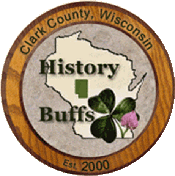News: Jackson
Co. - History of Mormons in Midwest (19 Jun 2013)
Contact: Dolores
(Mohr) Kenyon
E-mail:
dolores@wiclarkcountyhistory.org
Surnames: Prindle, Szymanski,
Dougherty, Spaulding, Smith, Young, Strang
----Source: Clark County
Press (Neillsville, Clark Co., WI) /2013
History of Mormons in the
Midwest (19 June 2013)
By Pat McKnight
Jane Prindle Szymanski* was
surprised to learn her great-great-grandfather was one of the 12 Apostles of The
Church of Jesus Christ of the Latter-day Saints (Mormons). That connection led
her to research the roles Mormons played in Jackson County history.
“To
me, it’s kind of personal, finding the family name in diaries and journals of
the time,” Szymanski said.
Szymanski, along with Joanne Dougherty,
presented a program June 11, 2013 on the history of the Mormon settlements in
the upper Midwest during the early 1840’s at the Black River Falls Public
Library.
The Jackson County History Room organized the program to
coincide with the visit of the Mormon Tabernacle Choir to Black River Falls. The
choir stopped in the city on Wednesday, June 19, to dedicate a historical marker
in the Field of Honor commemorating the Mormon loggers.
Mormon loggers
came to the pineries of Jackson County in 1841 to harvest white pine to ship
back to their settlement in Nauvoo, IL. They used the lumber to build the
temple, homes and other buildings in their Illinois settlement.
“At one
time, there were about 150 Mormon loggers in Jackson County,” Dougherty said.
“They bought half a mill at Roaring Creek. That didn’t work too well. They then
made a deal with Joseph (Jacob) Spaulding. They built three mills and went as
far north as Greenwood to get logs. They built homes and a warehouse and brought
along sheep, oxen and cattle.”
Dougherty said the Mormons got along with
the Native Americans because they believed the indigenous residents were
Lamanites. Lamanites are described in the Book of Mormon as a group of
dark-skinned people who were the descendants of Israelites who came to the
western hemisphere around 600 BCE.
While in Jackson County, the Mormon
loggers processed about one and a-half million board feet of milled lumber and
about 200,000 shingles as well as a number of loose logs, hewed timber and barn
boards.
Most of the loggers returned to Illinois when their leader,
Joseph Smith, was killed. The Jackson County Mormon lumb4ermen sold their mills
to Joseph (Jacob) Spaulding.
With the death of Smith, the Mormons had to
choose a new leader. Two men, Brigham Young and James Strang, contended to lead
the “saints” to indicate converts to Mormonism.
Szymanski ancestors chose
to follow Strang and were known as Strangite Mormons. That segment of Mormons
followed their leader to Northern Michigan. When the group was kicked out of
their Beaver Island, MI, settlement, some of the settlers returned to Jackson
County in 1856.
“My great-great-grandfather Anson and his brother moved
to Jackson County, where he homesteaded,” Szymanski said, “The Mormons settled
in the Wrightsville area and bought a mill on Halls Creek.”
According to
Dougherty, the 1856 settlers were quiet about being Mormon because “they had had
enough” mistreatment. Szymanski said her great-great-grandfather left the Mormon
faith in 1899.
Considering themselves Christian because they believe in
Jesus Christ, the Mormons use the Bible as well as their Book of Mormon to guide
their lives.
The religious sect has its headquarters in Salt Lake City,
UT, where the contingent following Brigham Young migrated after they left
Illinois.
(* I have corrected the spelling of this name Szymanski. Also
note it was Jacob Spaulding not Joseph Spaulding. Dmk)
